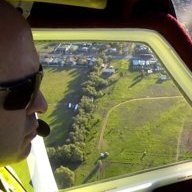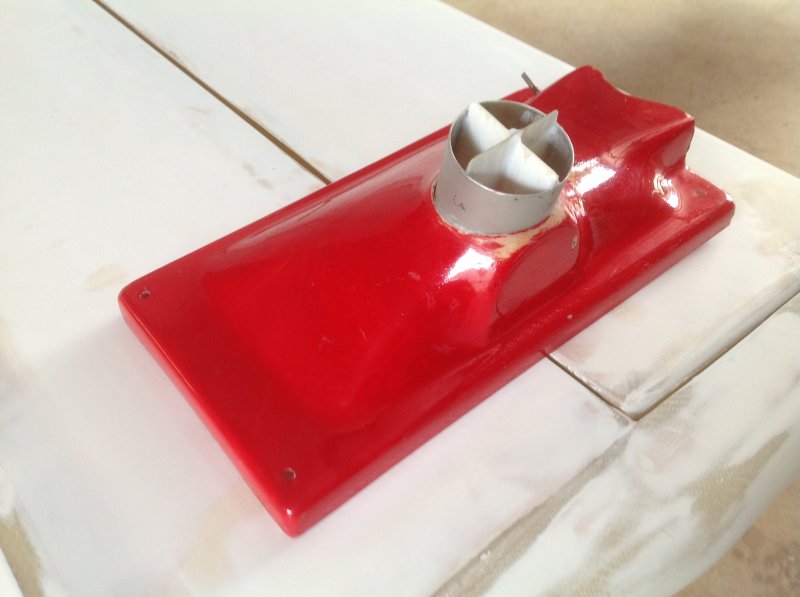-
Posts
658 -
Joined
-
Last visited
-
Days Won
1
Content Type
Profiles
Forums
Gallery
Downloads
Blogs
Events
Store
Aircraft
Resources
Tutorials
Articles
Classifieds
Movies
Books
Community Map
Quizzes
Posts posted by Keenaviator
-
-
Sorry Phil but if you are suggesting the 'powerful rotational force' is caused by prop wash, you are wrong. I fly hang gliders and paragliders (no engine or prop) and these can produce very strong 'rotational wash', also known as wing tip vortices. These vortices are caused by spanwise flow of air along the wing from root to tip. When it leaves the wing tip it does so in a spiral a bit like water going down the plug hole of a bath tub. If you fly in these vortices you may experience a strong rolling force which may cause your aircraft to roll substantially. If conditions are very still these vortices can hang around for quite a while before they dissipate. This is why it is advisable not to land too close behind another aircraft.
-
 2
2
-
-
Or Tyabb or Latrobe Valley where both RAA and GA operations are covered. No wasted time on the ground either.
-
 2
2
-
-
He may actually want to got places by air!thought about a PPC instead of an small plane?-
 2
2
-
-
I had the ICA-200 in the Starlet and it performed faultlessly and still is as far as I know. I bought this radio from a mate who was upgrading to an ICA-210 in his Jabbie. It worked well and had its own intercom built in therefore was better for the 2 seater. I believe it slid straight into the same cradle as the 200.
Laurie
-
-
Get an Icom panel mount and you won't look back.
My two bob's worth

Laurie
-
 2
2
-
-
No Steve, working at Morwell Courts. BTW I just tried calling you on skype.
The march out and graduation, that brings back memories!
-
Sounds like a plan.

-
The build has slowed somewhat since I returned to work :( but that's life and makes you appreciate the toys a whole lot more. I'm about to paint it and once that is done the final assemble won't take long. I also need to get the registration organised but don't envisage too much trouble there considering it's a recognised aircraft. I reckon you and Fr John will have 10 knots on me in cruise - I suppose I'll just have to blast off a bit earlier than you blokes.
-
Don't be bullied Steve.I have been gaggedRegards, Laurie
-
It's about time someone referred to the so called 'wake turbulence' by its correct term - wing tip vortices. Thrust has nothing to do with it and the power of these vortices should not be underestimated.Sorry Phil, it is the design of the wing and the draggyness of the trike (causing it to fly at high angle of attack) which is producing the vortices.I say again : http://www.trikepilot.com/magazine/read/wake-turbulence_609.htmlRegards Bill
-
I was thinking the tractor arrangement would work well for c/g. The prop arc of many twins seems close to the cabin.
-
The Avocet looks to be the ideal platform for a twin - wing mounted engines. It would be a very pretty aircraft and would really perform.
-
 1
1
-
-
It sounds like they pitched it up a bit which is a good thing. Now you shouldn't be over revving and using a bit more fuel for another 10 knots is to be expected - the engine is working harder now for the same given rpm.The engine has 85 hrs , prop has been wedged fine and the engine would over revLaurie.
ps, did you know Fr John has his engine out of the plane and a big closer to home? We took it out a couple of weeks ago and mounted it on a stand for the reassembly.
-
I think you're confusing a belt driven alternator for a prop flange.
-
 1
1
-
-
Might have to check your observation. Don't you notice the turret sitting above the cabin?Just an observation which may be incorrect (it happens), but it was originally a pusher but now in the hanger it looks like a tractor config.. if correct, is there a reason?A difference I noticed is that the turret is now a single faired unit whereas before it was standing on four faired tubes.
Also, what appears to be a spinner is probably a spinner moulded into the now front of the cowling probably to mimick the shape of a standard Jabiru cowling for cooling purposes.
Looking very nice Mike,
Regards, Laurie
-
Nice Javelin David :)You will need the 60k for the spare engines ...Regards, Laurie
-
Jabiru J120, around $60,000. Payload around 240kg.
-
All the best Mike. I know you are an excellent rebuilder having seen you and your son at work on Fr Johns J430 at Penong Station. Regards Laurie.
-
There is a track along the trailing edge where the aileron cable runs. I used some yellow tongue from chipboard flooring to install my lighting cable - wings off.
-
fuel is 8 to 10 ltrs per hr. #2 #4 are lean as plugs white, the other two are black rich, its not jetting its the distribution through the plenum box I think, more is going to 1 side than the other. i have searched the net and I think a cobra head with the cross in it or a plate baffle should improve the distribution to these pots going by others and various things I have read, this is my next move. any one had experience using these?

-
Have you got the new prop yet Steve? When speaking with you at Thurgoona you indicated it is under propped. I believe that can lead to low cylinder pressures which is not good for bedding in rings. Cheers, Laurie.
-
Gonna put one in your Drifter FT?Doesn't like foreigners? I tried to buy a Tornado from an old guy like that. -
Either that or he didn't have a vario or vsi and the best he had to see whether he was climbing or not, ie in the thermal, was to often give the altimeter a tap to see which way it was going. I suspect he would have no need for an altimeter to work out whether or not he was going to make it to his landing area.Love the way he keeps tapping the altimeter, knows he needs it to be accurate towards the end. Great piece of flying in my book....he's an avaitor for sure !!..................................................Maj...
-
 1
1
-




Petition to do away with ASIC
in AUS/NZ General Discussion
Posted
Done
Laurie